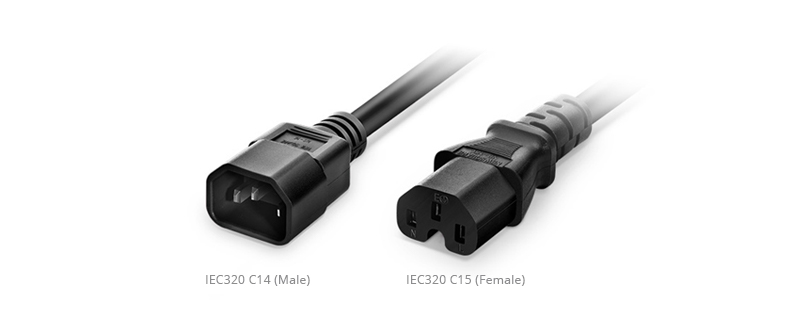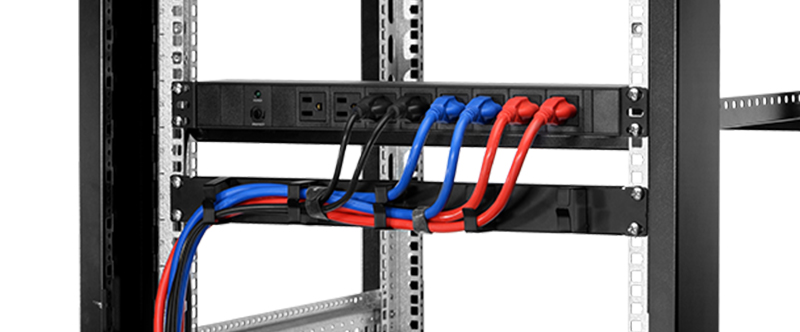Tips for Choosing Data Center Power Cords
In a data center power system design, the emphasis is often put on the power equipment while power cords are usually overlooked. As a matter of fact, the right selection of data center power cords matters not only to the cost of the data center installation but also its performance. This post will help you learn some key points about choosing data center power cords.
1. Know the Equipment You Will Plug Power Cords in.
The first thing is to know the maximum power voltage for the equipment. If you are going to connect multiple devices, remember to calculate the total power and then choose the connecting plugs accordingly. Next is the connector type of the equipment, which determines the power cord type. The standards for connectors of powered equipment and power cords vary in different countries: the international standard IEC 60320, NEMA for north America, CEE for Europe and others, which contains different connector types with different specifications. Take power cables complying to IEC standards for example, there are cables commonly used for data centers such as C14 to C13 power cables, C14 to C15 power cables and C20 to C19 power cables. For more information about power cord types, see How Much Do You Know About Power Cord Types?
 Figure 1: IEC C14 and IEC C15 power cord plug
Figure 1: IEC C14 and IEC C15 power cord plug
2. Different Colored Cords Make It Easier to Trace Wires.
Different colored cords are always suggested to organize and maintain high-density cables more easily. It is a good practice to simplify cable management because you can prepare different colors for power cords or data cords, differentiate side A power cords from side B power cords, or the main power line from redundant power lines. When used together with cable labels, such a design will keep the data center manager free from wasting much time tracing your data center cables or unexpected disconnections when moving equipment.
 Figure 2: Different colored power cords in data centers
Figure 2: Different colored power cords in data centers
3. Select Appropriate Cord Gauge and Length.
Cord gauge and length determine the extension cord’s load capacity, which is the ability to carry current. Cord gauge means the size of the wire based on its cross-sectional area. In the US, the usual method of notation is American Wire Gauge (AWG). A lower AWG number suggests a larger size of the wire as well as a higher capacity of the cord. For instance, 14AWG power cords are thicker than 16AWG power cords and are able to carry more current than 16AWG cords. Thinker gauge cords are also considered as future proof power cord solutions for your data center.
Similar to cord gauge, cord length contributes to the amperage rating of the data center power cord. Power extension cords can go from 2 feet to 30 feet or even longer, but should not exceed 100 feet to prevent power loss and overheating. As for the cable length, the longer, the lower power the cord can deliver to connected devices. It is better to use a power cord with less length to reduce power loss, especially when using devices with high amperage ratings. If you must go a long distance, you should upsize the power cord.
4. Choose a Suitable Cord Jacket Material.
The jacket provides protection to the shielding and conductor within a power cable. The selection of a power cord jacket depends on your requirement for the environment, temperature, and flexibility factors. For cord cables in North America, the SJT, SJTW, SJOW, etc. are the most common jacket types. These different jacket types are made out of various materials designed for multiple applications. Take SJT type as an example, it has PVC insulated conductor and jacket and is mainly applied for indoor use. You can check more information about the meaning and application of power cord jacket designation in FAQs for Data Center Power Cords.
5. Choose the Right Conductor Material.
The conductor within a power cable provides the power path for the current. The conduct materials market now is occupied by oxygen-free copper (OFC) and copper-clad aluminum (CCA). These conductor materials look the same but perform differently. CCA does better in conducting electricity than power cords made out of pure aluminum but still not as good as copper. Viewing from multiple aspects, OFC cords are generally better than copper-clad or pure aluminum in the data center power system application. Though CCA is cheaper than OFC, it is never a wise choice to sacrifice business continuity and safety to gain short-term benefits. Therefore, OFC cords are suggested to be used in data centers instead of CCA cords for gaining better power quality and reliability.
6. Use Angled Connectors for Saving Spaces.
For data centers with limited spaces, angled connectors, or plugs play their role in saving spaces and improving airflow to servers. There are up, down, left, right, and even 45-degree angle options available for connections within high-density racks. It is also a good way to reduce the likelihood of disconnecting a power cord when working in a high-density space.
You might be interested in
Email Address

-
PoE vs PoE+ vs PoE++ Switch: How to Choose?
Mar 16, 2023














